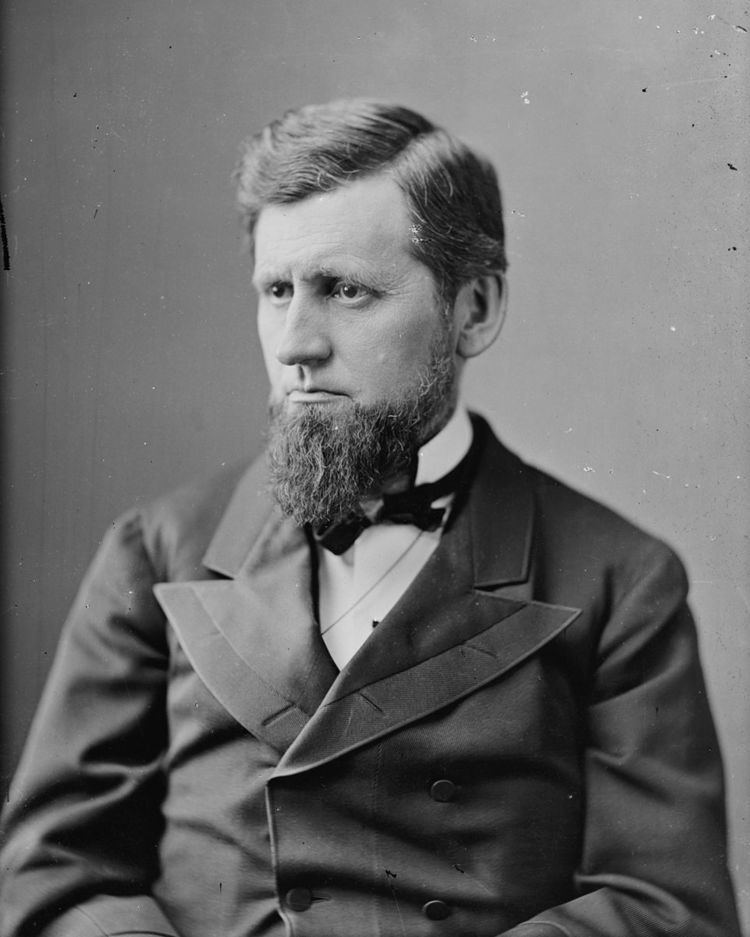January 15, 1902 –
February 21, 1903 1904 / 1905 → 18 11 18 8 | 55 29 55 32 2 2 | |
 | ||
The United States Senate elections of 1902 and 1903 were elections which had the Democratic Party gain three seats in the United States Senate, but the Republicans kept their strong majority.
Contents
- Results summary
- Before the elections
- Elections during the 57th Congress
- Races leading to the 58th Congress
- Election during the 58th Congress
- New York
- Pennsylvania
- References
As these elections were prior to ratification of the seventeenth amendment, Senators were chosen by State legislatures.
Results summary
Senate Party Division, 58th Congress (1903–1905)
Before the elections
After the January 29, 1902, special election in New Jersey.
Elections during the 57th Congress
In these elections, the winners were seated during 1902 or in 1903 before March 4; ordered by election date.
Races leading to the 58th Congress
In these general elections, the winners were elected for the term beginning March 4, 1903; ordered by state.
All of the elections involved the Class 3 seats.
Election during the 58th Congress
In this election, the winner was elected in 1903 after March 4.
New York
The election in New York was held on January 20, 1903 by the New York State Legislature.
Republican Thomas C. Platt had previously been re-elected to this seat in 1897, and his term would expire on March 3, 1903.
At the State election in November 1902, 28 Republicans and 22 Democrats were elected for a two-year term (1903-1904) in the State Senate; and 89 Republicans and 61 Democrats were elected for the session of 1903 to the Assembly. State Senator Patrick F. Trainor who had been re-elected, died on December 25, 1902, and his successor Peter J. Dooling was elected only after the senatorial election, on January 27. The 126th New York State Legislature met from January 6 to April 23, 1903, at Albany, New York.
The Republican caucus met on January 19. 25 State senators and 84 assemblymen attended, and State Senator William W. Armstrong presided. The caucus re-nominated the incumbent U.S. Senator Thomas C. Platt almost unanimously. A single vote was cast for U.S. Secretary of War Elihu Root by Assemblyman William A. Denison, of Jefferson County. Besides Denison voting against Platt, a small number of anti-Platt men did not attend the caucus. Boss Platt had forced the nomination of Attorney General John C. Davies to the New York Supreme Court in the 5th District, against the local Republican organization's wishes who accused Davies of incompetence. Davies was defeated in a landslide by Democrat Watson M. Rogers although the 5th District was heavily Republican. Thus boss Platt's power began to wane.
The Democratic caucus met also on January 19. All 62 State legislators attended, and Assemblyman Charles W. Hinson, of Erie County, presided. They nominated John B. Stanchfield unanimously. Stanchfield had been Mayor of Elmira, and was defeated when running for Governor of New York in 1900 by Republican Benjamin B. Odell, Jr.
Thomas C. Platt was the choice of both the Assembly and the State Senate, and was declared elected. Three Republican anti-Platt men, State Senators Edgar T. Brackett (28th D.), Elon R. Brown and Nathaniel A. Elsberg (15th D.), voted for Elihu Root.
Note: The votes were cast on January 20, but both Houses met in a joint session on January 21 to compare nominations, and declare the result.
Pennsylvania
The election in Pennsylvania was held on January 20, 1903. Boies Penrose was re-elected by the Pennsylvania General Assembly
The Pennsylvania General Assembly, consisting of the House of Representatives and the Senate, convened on January 20, 1903. Incumbent Republican Boies Penrose, who was elected in 1897, was a successful candidate for re-election to another term. The results of the vote of both houses combined are as follows:
